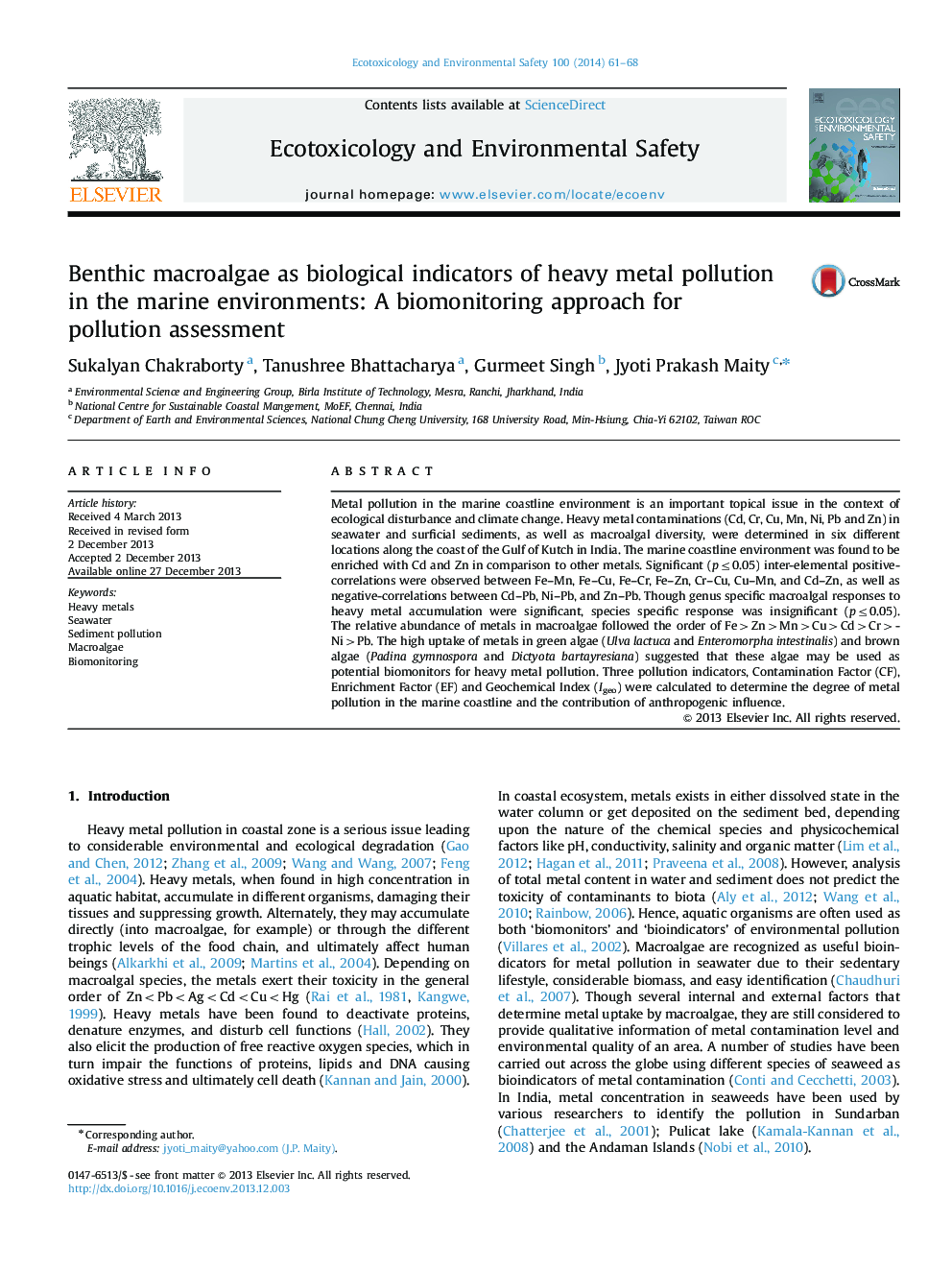| Article ID | Journal | Published Year | Pages | File Type |
|---|---|---|---|---|
| 6312284 | Ecotoxicology and Environmental Safety | 2014 | 8 Pages |
â¢Heavy metals accumulate in seawater and sediments of urbanized and industrialized coastal ecosystem.â¢The CF, EF and Igeo exhibit the coastal pollution due to anthropogenic influence.â¢Macroalgae uptake heavy metals from seawater and sediments in the order of Fe>Zn>Mn>Cu>Cd>Cr>Ni>Pb.â¢Some macroalgae serve as good bioindicator like: U. lactuca, E. intestinalis, P. gymnospora, D. bartayresiana.
Metal pollution in the marine coastline environment is an important topical issue in the context of ecological disturbance and climate change. Heavy metal contaminations (Cd, Cr, Cu, Mn, Ni, Pb and Zn) in seawater and surficial sediments, as well as macroalgal diversity, were determined in six different locations along the coast of the Gulf of Kutch in India. The marine coastline environment was found to be enriched with Cd and Zn in comparison to other metals. Significant (pâ¤0.05) inter-elemental positive-correlations were observed between Fe-Mn, Fe-Cu, Fe-Cr, Fe-Zn, Cr-Cu, Cu-Mn, and Cd-Zn, as well as negative-correlations between Cd-Pb, Ni-Pb, and Zn-Pb. Though genus specific macroalgal responses to heavy metal accumulation were significant, species specific response was insignificant (pâ¤0.05). The relative abundance of metals in macroalgae followed the order of Fe>Zn>Mn>Cu>Cd>Cr>Ni>Pb. The high uptake of metals in green algae (Ulva lactuca and Enteromorpha intestinalis) and brown algae (Padina gymnospora and Dictyota bartayresiana) suggested that these algae may be used as potential biomonitors for heavy metal pollution. Three pollution indicators, Contamination Factor (CF), Enrichment Factor (EF) and Geochemical Index (Igeo) were calculated to determine the degree of metal pollution in the marine coastline and the contribution of anthropogenic influence.
Graphical abstractDownload full-size image
